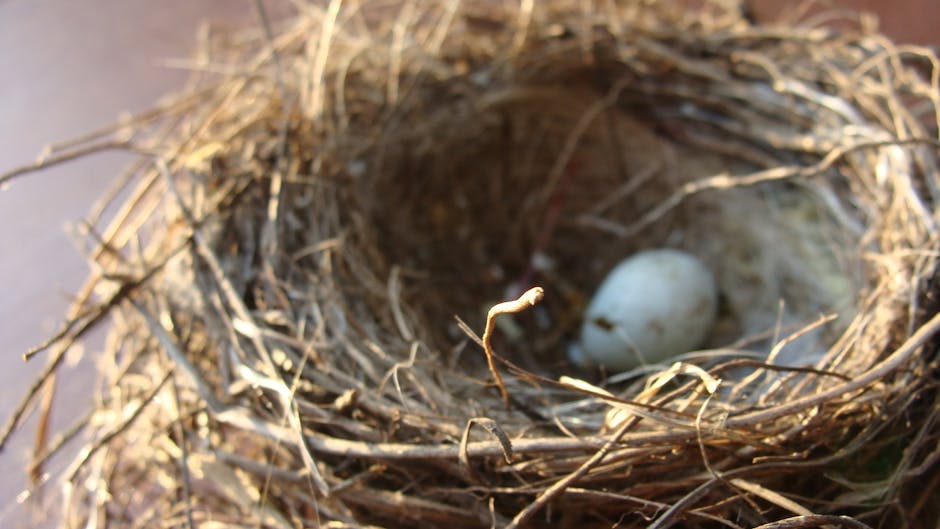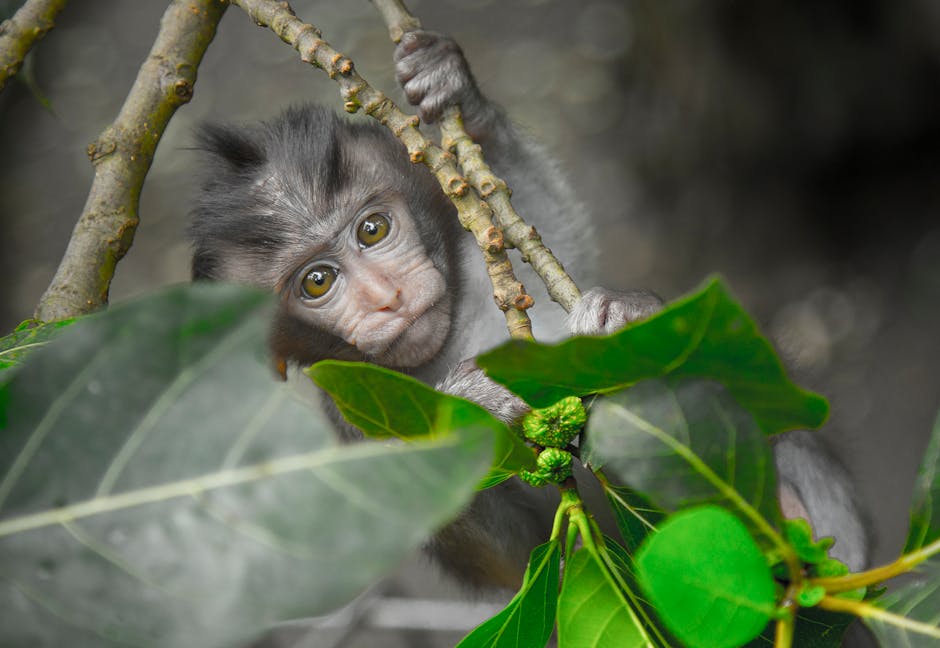Introduction

Welcome to our comprehensive guide on what to do when you find a bird egg on the ground. Discovering a bird egg can be an exhilarating and delicate situation, demanding proper handling for the bird’s well-being and species conservation. In this article, we will provide step-by-step instructions and essential safety precautions to follow when encountering a bird egg.
Overview of the Article

This guide covers everything you need to know about responsibly handling a bird egg. We’ll begin by discussing how to identify the species of bird, assess the egg’s condition, and consider environmental factors and potential predators. Emphasizing safety precautions, we’ll highlight the use of protective gloves, thorough handwashing, and gentle handling techniques.
Next, we’ll delve into the process of re-nesting the egg. If re-nesting is feasible, we’ll guide you through determining whether the egg is recently laid and finding a suitable nearby nest. However, if re-nesting is not possible, we’ll provide guidance on contacting a local wildlife rescue for assistance.
By the end of this article, you’ll have a clear understanding of how to ethically and responsibly handle a bird egg, ensuring the best possible outcome for the bird’s well-being.
What to Do When You Find a Bird Egg on the Ground
When you come across a bird egg on the ground, it’s important to take appropriate steps to ensure the well-being of the egg and potential hatchling. Here are some guidelines to follow:
Identify the Species of Bird
Identifying the species of bird provides valuable insights into the egg’s needs and requirements. To determine the bird species:
- Observe the size, shape, and color of the egg.
- Consult a field guide or reputable online resources.
- Seek assistance from local birding communities.
Determine Whether the Egg Is Intact
Assessing the egg’s condition helps determine its viability and the need for immediate attention. Here’s what you can do:
- Carefully examine the egg for cracks or damage.
- Gently touch the egg to feel for any hairline cracks or abnormalities.
- Note the presence of any liquid or yolk.
Consider the Environment and Potential Predators
Before taking any action, assess the surrounding environment and potential threats to the egg’s safety. Consider:
- Location of the egg.
- Presence of potential predators.
- Environmental conditions.
By identifying the bird species, assessing the egg’s condition, and considering the environment and potential predators, you can make informed decisions to ensure the best chances for the egg’s survival.
Safety Precautions for Handling a Bird Egg

When encountering a bird egg, it’s essential to handle it with care and take necessary safety precautions. Here are some guidelines to protect the egg and yourself:
Wear Protective Gloves
Before handling a bird egg, wear protective gloves to minimize contamination, protect the egg from harmful substances, and create a barrier between your skin and the delicate eggshell.
Wash Hands Thoroughly
Practice proper hand hygiene by thoroughly washing your hands with soap and warm water before and after touching the egg. This helps remove potential contaminants and reduces the risk of introducing harmful bacteria or chemicals to the egg.
Handle the Egg Gently
Bird eggs are fragile, so handle them gently to avoid damage to the developing embryo or the eggshell itself. Avoid applying excessive pressure or shaking. Carefully cradle the egg in your hand or use a soft cloth for additional support.
By following these safety precautions, you can protect the well-being of the bird egg and increase its chances of successful development. However, remember that handling a bird egg should only be done when necessary. Whenever possible, consult with a local wildlife authority or bird rehabilitation center for guidance on giving the egg the best chance of survival.
In the next section, we will discuss the process of re-nesting the egg if it is intact and suitable for relocation.
Re-nesting the Egg

If you find a bird egg on the ground, you may consider re-nesting it to ensure its care. However, before attempting to re-nest, it’s crucial to determine if the egg is recently laid or abandoned. A fresh egg will have a smooth surface, with no visible contents, and will feel warm to the touch.
When searching for a suitable nest, look for nests of the same bird species nearby. These nests are more likely to be accepted by the parents. Pay attention to the nest’s size, shape, and security, ensuring it protects the egg from predators and the elements.
Gently place the egg back in the nest, ensuring it is secure and won’t roll out. Avoid excessive handling to prevent damage or leaving human scent on the egg, which may deter the parents from returning.
Re-nesting is not always possible or appropriate, so if you have doubts, contact a local wildlife rescue for guidance and assistance.
Continue to Contacting a Local Wildlife Rescue
Contacting a Local Wildlife Rescue

If re-nesting the bird egg is unsuccessful or unsafe, it’s crucial to contact a local wildlife rescue organization. Provide clear details about where and when you found the egg, including the location and any relevant environmental factors. If possible, identify the bird species.
Listen attentively to the advice provided by the wildlife rescue. They may ask additional questions about the egg’s condition and surrounding circumstances. Follow their instructions diligently, whether it’s leaving the egg in place, safely transporting it to their facility, or monitoring the situation.
Express gratitude and support to the wildlife rescue for their assistance. Remember, they are dedicated individuals who invest their time and resources to protect and care for wildlife.
By contacting a local wildlife rescue, providing details about the egg, and following their advice, you ensure the well-being and survival chances of the bird.
Conclusion

This article explores the considerations and steps when encountering a bird egg on the ground. Identifying the species and determining the egg’s condition are crucial in making appropriate decisions.
Considering the environment and potential predators, re-nesting may be an option. If not, contacting a local wildlife rescue is essential. Remember to provide clear details, listen to their advice, and show appreciation for their assistance.
Safety precautions for handling a bird egg include wearing protective gloves, handling gently, using appropriate transportation, and creating a suitable environment.
When re-nesting is not possible, contacting wildlife authorities or rehabilitators is important. Prioritize the bird’s welfare and adhere to wildlife conservation regulations.
With this information, readers can confidently approach the discovery of a bird egg, ensuring their actions align with the bird’s best interests.
Frequently Asked Questions
FAQ
Q: What should I do if I find a bird egg on the ground?
A: If you find a bird egg on the ground, it’s important to take appropriate steps to ensure the well-being of the egg and potential hatchling. Identify the species of bird, assess the egg’s condition, consider the environment and potential predators, and follow safety precautions. Depending on the circumstances, you can either attempt to re-nest the egg or contact a local wildlife rescue for guidance.
Q: How can I identify the species of bird from the egg?
A: To identify the species of bird from the egg, observe its size, shape, and color. You can also consult a field guide or reputable online resources for assistance. Seeking guidance from local birding communities or experts can provide valuable insights into identifying the species accurately.
Q: What should I do if the egg is cracked or damaged?
A: If the egg is cracked or damaged, it may not be viable, and attempting to re-nest it may not be appropriate. In such cases, it’s best to contact a local wildlife rescue for guidance. They can assess the situation and advise you on the best course of action to ensure the well-being of the bird.
Q: Can I touch the bird egg with my bare hands?
A: It’s recommended to wear protective gloves when handling a bird egg. This helps minimize contamination, protects the egg from harmful substances, and creates a barrier between your skin and the delicate eggshell. Additionally, practice proper hand hygiene by thoroughly washing your hands with soap and warm water before and after touching the egg.
Q: What should I do if I can’t find a suitable nest to re-nest the egg?
A: If you can’t find a suitable nest to re-nest the egg or you’re unsure if re-nesting is feasible, it’s important to contact a local wildlife rescue for guidance. They have the expertise to assess the situation and provide the

Leave a Reply